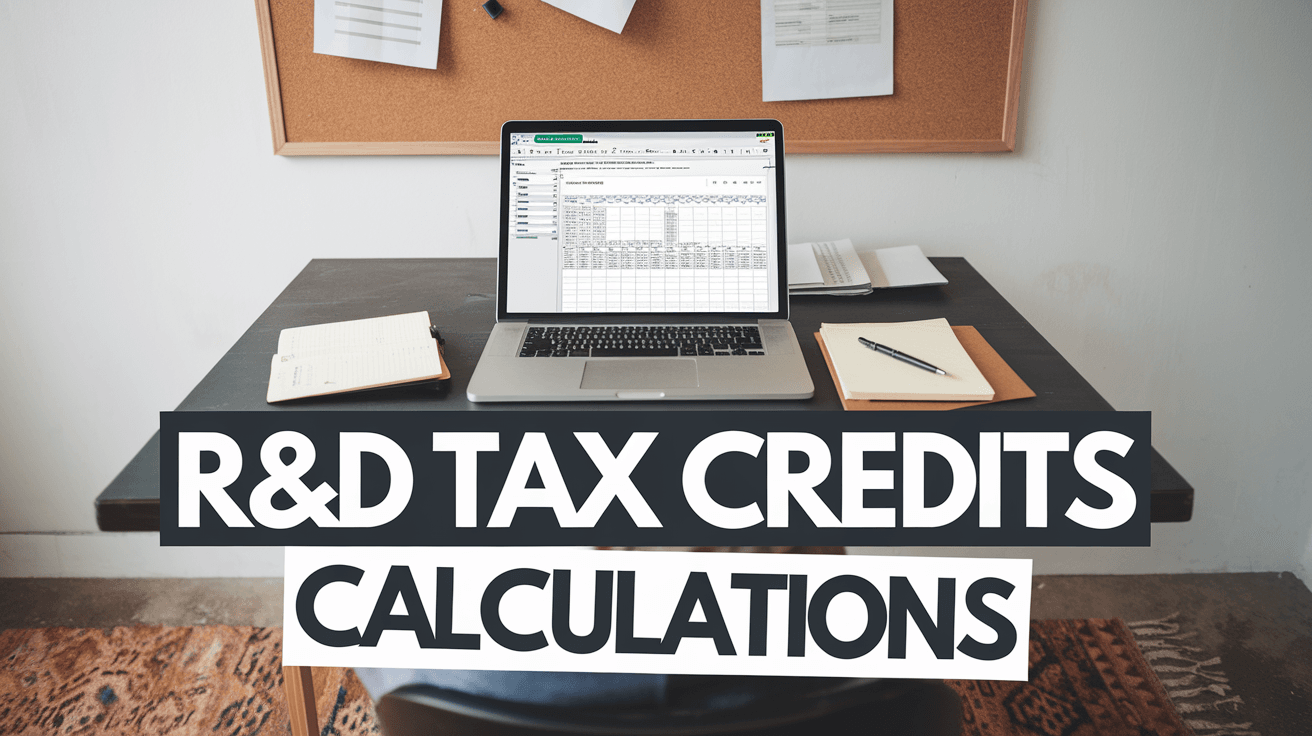R&D Tax Credits Leigh Greater Manchester
R&D tax credits in Leigh, Greater Manchester, are valuable financial incentives provided by the UK government to encourage businesses to invest in research and development. These credits allow eligible companies to reduce their corporation tax liability or claim a cash credit based on their qualifying R&D expenditure. By claiming R&D tax credits, businesses can reinvest the saved funds into their operations, supporting innovation and growth.
To qualify, your business must meet specific criteria, such as having fewer than 500 employees, an annual turnover under €100 million, or a balance sheet under €86 million. The R&D project must aim to achieve an advance in science or technology, involve overcoming uncertainty, and address a problem that an experienced professional in the same field couldn’t resolve on their own. R&D Tax Credit Specialists can guide you through the eligibility criteria and the application process, ensuring you maximize your claim and comply with HMRC regulations.

How Do R&D Tax Credits Benefit Leigh Businesses?
R&D tax credits can significantly benefit Leigh businesses by reducing their tax liability and providing financial incentives for innovation. These credits can be claimed for qualifying research and development activities, helping businesses to reinvest their savings in further innovation.
Financial Advantages
R&D tax credits offer Leigh businesses a financial boost by allowing them to claim a higher rate of payable tax credit, especially for loss-making R&D intensive SMEs. From April 2024, these businesses can continue to claim under rules similar to the current SME scheme, providing additional relief.
The merged R&D Expenditure Credit (RDEC) and SME schemes will have a rate set at the current RDEC rate of 20%, which can be claimed for expenditure incurred in accounting periods beginning on or after 1 April 2024. This merger simplifies the process and provides a consistent rate for all eligible businesses.
Competitive Edge in Innovation
R&D tax credits give Leigh businesses a competitive edge by incentivizing innovation and growth. By claiming these credits, businesses can offset a portion of their research and development expenses, which can include wages, materials, and payments to third-party contractors. This financial support enables businesses to invest more in developing new products, processes, and technologies, thereby staying ahead in their respective markets.
The ability to carry forward unused portions of the credit for up to 20 years also allows businesses to plan long-term, knowing they can utilize these credits in future years when they may be more profitable. This flexibility is crucial for businesses that are currently in the development phase and may not yet be generating significant profits.

Which Industries Commonly Claim R&D Tax Credits?
Companies across various industries in the UK can claim R&D tax credits, but some sectors are more prevalent in doing so. The main industries that commonly claim R&D tax credits include those that heavily invest in innovation and technological advancements.
Technology Sector
The technology sector, particularly software development, is a significant beneficiary of R&D tax credits. Companies in this sector often engage in activities such as developing new software tools, improving data capture and transmission methods, and testing new software processes. These activities, which involve overcoming technical challenges and achieving advancements in computer science, are eligible for R&D tax relief.
Manufacturing
The manufacturing sector is the largest claimant of R&D tax credits. Manufacturing companies frequently invest in developing new products, improving existing processes, and adapting to changes in legislation and industry requirements. Activities such as product development using computer-aided tools, developing second-generation products, and improving production processes to meet regulatory standards are common qualifying R&D activities.
Life Sciences
The life sciences sector, including healthcare and pharmaceutical companies, is another major sector claiming R&D tax credits. These companies focus on improving services, products, and treatments, which involves extensive research and development. Activities like developing software solutions for electronic medical records, testing new product prototypes, and reducing side effects of pharmaceuticals are all eligible for R&D tax relief.
Others
Other industries that commonly claim R&D tax credits include oil and gas, farming and agriculture, and professional, scientific, and technical services. In the oil and gas sector, companies develop new technologies to find and extract resources more efficiently. In farming and agriculture, companies work on improving production processes, developing new machinery, and enhancing soil formulation. Professional, scientific, and technical services, such as engineering and architectural firms, also claim R&D tax credits for activities like testing new technologies and materials.

What Qualifies as R&D Under UK Tax Law?
To qualify as Research and Development (R&D) under UK tax law, your project must seek an advance in science or technology by overcoming scientific or technological uncertainties. This advance must benefit the field overall, not just your business.
Qualifying Activities
Qualifying R&D activities involve projects that aim to make an advance in science or technology. Here are the key criteria:
- Advance in Science or Technology: Your project must look for an advance in the field of science or technology, which is not just an improvement in your company’s own knowledge or capability.
- Overcoming Uncertainty: The project must encounter scientific or technological uncertainties that a competent professional in the field cannot easily resolve. This means the solution to the challenge was not readily available or within public information.
- Resolution Efforts: The project must try to overcome these uncertainties, and the resolution must not be easily worked out by a professional in the field.
- Competent Professionals: The R&D work should be carried out by competent professionals, such as engineers, scientists, or skilled craftsmen.
Examples of qualifying activities include developing new software products, modifying existing production lines to increase productivity, and creating bespoke applications or machines to solve specific problems.
Excluded Activities
Not all activities qualify for R&D tax relief. Here are some excluded activities:
- Arts, Humanities, and Social Sciences: Projects related to the arts, humanities, and social sciences, including economics, do not qualify for R&D tax relief.
- Non-Scientific/Technological Uncertainties: Work aimed at overcoming non-scientific or technological uncertainties does not qualify. For instance, resolving financial or administrative challenges does not count as R&D.
- Routine or Periodic Changes: Routine or periodic changes to existing products, processes, or services that do not involve overcoming scientific or technological uncertainties are not eligible.
By ensuring your project meets these criteria, you can determine if it qualifies for R&D tax relief under UK tax law.

How Are R&D Tax Credits Calculated?
To calculate R&D tax credits, you need to determine the qualifying expenditure on your R&D activities and then apply the relevant tax credit rates. The calculation process differs depending on whether your company falls under the SME Scheme or the RDEC Scheme.
SME Scheme
For small and medium-sized enterprises (SMEs), the SME Scheme allows you to claim a significant portion of your R&D expenditure. Here’s how it works:
-
If your company is profitable, you can claim an enhanced deduction of 86% of your qualifying R&D expenditure (reduced from 130% as of April 2023).
- For example, if you spent £100,000 on qualifying R&D, the enhanced expenditure would be £100,000 x 186% = £186,000. This results in a corporation tax saving of £46,500 (assuming a 25% corporation tax rate).
-
If your company is loss-making, you can surrender the loss for a tax credit. As of April 2023, the tax credit rate is 10% of the surrenderable loss (previously 14.5%).
- For instance, if you spent £100,000 on qualifying R&D, the enhanced expenditure would be £100,000 x 186% = £186,000. You could then claim a tax credit of up to 10% of this amount, which is £18,600.
RDEC Scheme
The RDEC Scheme is primarily for larger companies or those that do not qualify for the SME Scheme. Here’s how the calculation works:
- You can claim a tax credit of 20% of your qualifying R&D expenditure (increased from 13% as of April 2023).
- For example, if you spent £1,000,000 on qualifying R&D, the tax credit would be £1,000,000 x 20% = £200,000. This is provided as a cash payment or a reduction in your corporation tax liability.
This scheme adds the RDEC to your taxable profit but reduces your corporation tax payable by the same amount, ensuring you receive the full benefit of the credit.

What Are the Recent Changes to UK R&D Tax Credits?
The UK has introduced significant changes to its R&D tax credit system, effective from April 1, 2024, aimed at simplifying the process and curbing fraud. These changes include the merger of the SME R&D tax relief and the Research and Development Expenditure Credit (RDEC) schemes into a single scheme.
Policy Updates
- Merged RDEC Scheme: The SME R&D tax relief and RDEC schemes have been merged into a single RDEC-like scheme, applicable for accounting periods starting on or after April 1, 2024, with a uniform rate of 20% above-the-line credit.
- Increased RDEC Rate: The RDEC rate has been increased from 13% to 20% for expenditure starting on or after April 1, 2023.
- Enhanced R&D Intensive Scheme (ERIS): Loss-making SMEs that spend at least 30% of their total expenditure on R&D (reduced from 40%) can claim a 27% tax credit under the ERIS scheme.
- Digital Submission: All R&D claims must be submitted online, and additional information is required to support claims, such as a breakdown of the types of R&D expenditure.
- Subcontracting Changes: R&D Tax Credits will be received by the company conducting the research and development, rather than the subcontracted company, and overseas costs for externally provided workers are no longer eligible except in specific circumstances.
- R&D Intensity Threshold: The R&D intensity threshold for SMEs has been reduced from 40% to 30% of total expenditure.
Impact on Businesses
- Simplified Process: The merger of the schemes aims to simplify the R&D tax relief landscape, making it easier for businesses to claim relief.
- Reduced Fraud: The changes include measures to crack down on error and fraud, such as mandatory digital submission and additional scrutiny on claimants.
- Financial Benefits: Under the new merged scheme, businesses can claim a tax credit of 20% of their qualifying R&D expenditure, resulting in a post-tax benefit of between 15% and 16.2% depending on the corporation tax rate.
- Impact on SMEs: Loss-making SMEs that are R&D intensive can benefit from a higher rate of 27% under the ERIS scheme, while other SMEs will see reduced benefits compared to previous rates.

How Can Leigh Businesses Apply for R&D Tax Credits?
To apply for R&D tax credits, Leigh businesses need to ensure they meet the eligibility criteria and follow the specific application process set by HMRC. This involves identifying qualifying R&D projects and gathering the necessary documentation to support the claim.
Application Process
- Assess Qualifying Projects: Determine which of your projects qualify for R&D tax relief by ensuring they aim to achieve an advance in science or technology and overcome scientific or technological uncertainties.
- Gather R&D Costs: Collect all the costs associated with your R&D projects, including staff, software, consumable items, and subcontractor costs.
- Apportion Costs: Allocate these costs to each specific R&D project to ensure accurate reporting.
- Write a Technical Report: Prepare a detailed technical report that explains the R&D projects, the advances sought, and the uncertainties overcome. For multiple projects, include at least three projects that cover 50% of the costs.
- Submit Additional Information Form: Complete and submit the Additional Information Form (AIF) to HMRC before or on the same day as your Company Tax Return. This form includes details of the qualifying expenditure, project descriptions, and contact details of key personnel involved in the R&D claim.
- Notify HMRC in Advance: If you are a first-time claimant or it has been more than three years since your last claim, notify HMRC of your intention to make a claim within six months of the end of your accounting period.
Required Documentation
- Technical Report: A comprehensive report detailing each R&D project, including the scientific or technological advances sought and the uncertainties faced.
- Costing Report: A detailed report outlining the costs associated with each R&D project, including staff costs, software, consumables, and subcontractor fees.
- Additional Information Form: This form is required to support your R&D tax relief claim and must be submitted along with your Company Tax Return.
- Record-Keeping: Maintain records such as meeting notes, planning materials, and workflow tracking to support your R&D claims. While HMRC does not specify exact record-keeping requirements, having these documents is crucial for validation.
- Company Tax Return: Ensure your Company Tax Return includes the R&D tax relief claim and matches the dates and details provided in the Additional Information Form.
By following these steps and ensuring you have the necessary documentation, Leigh businesses can successfully apply for R&D tax credits and benefit from the financial incentives provided by the UK government.

What Common Mistakes Should Be Avoided When Claiming?
When claiming taxes, customs duties, or VAT, it is crucial to avoid mistakes that can lead to penalties, delays, and additional costs. Here are some key mistakes to watch out for:
Overclaiming
Overclaiming involves claiming more than you are entitled to, which can result in serious consequences. For instance, HMRC may impose penalties and interest if you claim too much VAT or customs duty. Incorrectly claiming personal expenses as business expenses is another common mistake that can get you into trouble with HMRC.
Underclaiming
Underclaiming, on the other hand, means missing out on legitimate deductions and credits. Failing to claim all available deductions, such as office supplies or travel expenses, can result in paying more tax than necessary. Ensuring you understand all the deductions and credits available is essential to avoid underclaiming.
Documentation Errors
Documentation errors can cause significant issues when claiming taxes or customs duties. Not having proof of origin for imported goods can lead to complications at the border, missed opportunities to reduce duty liability, and potential penalties. Incorrect customs classification codes can also result in delays, incorrect VAT or duty payments, and penalties from HMRC.
Additionally, failing to submit a supplementary customs declaration on time can lead to fines for non-compliance. Ensuring all documentation, including VAT invoices and customs declaration forms, is accurate and complete is vital to avoid these mistakes.

How Can Professional Advice Enhance R&D Tax Credits Claims?
Professional advice can significantly boost your R&D tax credits claims by ensuring you meet all the eligibility criteria and maximize your claim amount. Experts in R&D tax credits can navigate the complex regulations and identify all qualifying expenditures, thereby optimizing your tax relief.
Role of Tax Credit Specialists
Tax credit specialists play a crucial role in the process of claiming R&D tax credits. Here are some key aspects of their role:
- Assessment and Eligibility: They assess whether your projects meet the HMRC definition of R&D, which involves achieving an advance in science or technology and overcoming scientific or technological uncertainties.
- Identifying Qualifying Expenditure: Specialists help identify all the costs that qualify for R&D tax relief, including staff costs, subcontractor fees, and consumables related to the R&D project.
- Compliance and Documentation: They ensure that all necessary documentation is in place and that the claim is compliant with HMRC guidelines, reducing the risk of HMRC enquiries.
- Maximizing Claims: Experts calculate the enhanced expenditure and ensure that you claim the maximum amount possible under the relevant scheme, whether it is the SME R&D tax credit scheme or the RDEC scheme.
Benefits of Expert Guidance
The benefits of seeking expert guidance for R&D tax credits are numerous:
- Increased Claim Amounts: Specialists can help you claim a higher percentage of your R&D expenditure, up to 33% for SMEs and up to 15% for larger companies under the RDEC scheme.
- Reduced Risk: Expert guidance minimizes the risk of errors in your claim, ensuring that you comply with all HMRC regulations and avoid potential penalties.
- Time and Resource Savings: By outsourcing the complex process of R&D tax credit claims to specialists, you can focus on your core business activities while ensuring your claims are handled efficiently.
- Cash Flow Benefits: For loss-making companies, expert guidance can help secure cash credits, which are vital for maintaining cash flow and supporting ongoing innovation.
In Conclusion
R&D tax credits in Leigh, Greater Manchester, are a valuable government incentive designed to reward businesses for their investments in research and development. These credits can significantly reduce your company's tax bill or provide a cash refund, especially beneficial for loss-making businesses.
By claiming R&D tax credits, Leigh businesses can offset a substantial portion of their research and development expenses against their tax liability. This financial benefit encourages innovation and growth, allowing businesses to reinvest their savings in further R&D activities. The recent changes to the R&D tax credit system, including the merger of the SME and RDEC schemes into a single scheme from April 2024, aim to simplify the process and provide a consistent rate for all eligible businesses.
To maximize the benefits of R&D tax credits, it is crucial to ensure your projects meet the HMRC eligibility criteria and to follow the correct application process. Working with R&D Tax Credit Specialists can help you navigate the complex regulations, identify all qualifying expenditures, and ensure compliance with HMRC guidelines. This expert guidance can increase your claim amounts, reduce the risk of errors, and save you time and resources.
If you believe your business is eligible for R&D tax credits, do not hesitate to reach out to R&D Tax Credit Specialists. They can guide you through the assessment and application process, ensuring you receive the full financial benefits available for your innovative projects. Contact them today to discuss your eligibility and start the process of claiming your R&D tax credits.

